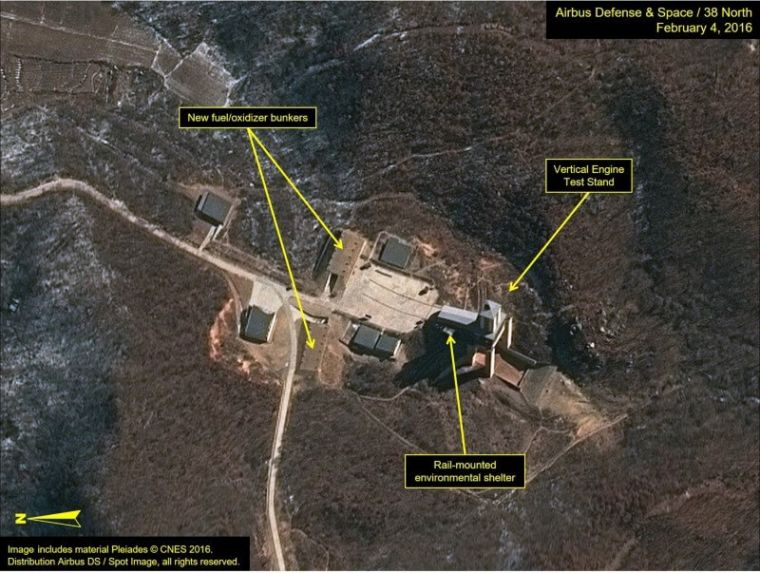US Navy on alert as North Korea rocket is ready to launch

Satellite images taken this week of North Korea's Sohae rocket launch site show apparent fueling activity seen in the past shortly before a rocket launch, a US think-tank said, as US government officials signaled that a launch could occur as early as Monday.
North Korea has told UN agencies it will launch a rocket carrying what it called an earth observation satellite some time between February 8 and February 25, triggering international opposition from governments that see it as a long-range missile test.
On Friday, US government sources said intelligence agencies believed North Korea could be ready by the US Super Bowl kickoff on Sunday, which will be Monday in Korea. Activity at the site was consistent with a launch in the time frame given by Pyongyang, US officials said.
US Pacific Command said it was closely monitoring the situation and had many missile defence assets in the region that would provide "a robust defence".
"No one should doubt that US Pacific Command forces are prepared to protect the American homeland and defend our allies in South Korea and Japan," said Pacific Command spokesman, US Navy Captain Cody Chiles.
Commercial satellite images from Wednesday and Thursday show the arrival of tanker trucks at the launch pad, said Washington-based 38 North, a North Korea-monitoring project. It said the presence of the trucks probably indicated the filling of tanks within bunkers at the site rather than a rocket itself.
"In the past, such activity has occurred one to two weeks prior to a launch event and would be consistent with North Korea's announced launch window," the group said.
On Friday, US President Barack Obama spoke by telephone with President Xi Jinping of China, North Korea's main ally and neighbour, and agreed that a North Korean launch would represent a "provocative and destabilising action," the White House said.
Obama and Xi also said they would coordinate efforts to respond to North Korea's nuclear test last month and said they would not accept North Korea as a nuclear weapon state.
"The leaders emphasised the importance of a strong and united international response to North Korea's provocations, including through an impactful UN Security Council Resolution," the White House said.
Washington and Beijing have appeared divided over how to respond to North Korea, with the United States urging tougher sanctions and China stressing the need for dialogue.
Earlier on Friday, Xi told South Korea's president that China was dedicated to maintaining peace and stability on the Korean peninsula.
The 38 North report said activity could also be seen around a building at the launch site used in the past to receive and assemble rocket stages.
It said the imagery showed vehicles including one or two buses and a crane, a level of activity similar to that seen before the previous launch in 2012.
The group said the images indicated no significant changes at the launch pad itself, where work platforms on the gantry towers remained folded forward. It said coverings obscured whether a space-launch vehicle was present on the pad.
North Korea says it has a sovereign right to pursue a space programme. But it is barred under UN Security Council resolutions from using ballistic missile technology.
Coming so soon after North Korea's fourth nuclear test on January 6, a rocket launch would raise concern that it plans to fit nuclear warheads on its missiles, giving it the capability to strike South Korea, Japan and possibly the US West Coast.
US Pacific Command said it had Aegis ballistic missile defence systems, Terminal High Altitude Area Defence batteries and the Sea-Based X-Band Radar in the region, which would work with Japanese and South Korean militaries to detect the launch.
The USS Benfold, a guided-missile destroyer, arrived on Friday in Otaru, Japan, one of five US destroyers equipped with Aegis ballistic missile defence systems that are girding for the potential launch, according to several sources.
The ships are spread out around the region to protect installations in Japan, Guam and South Korea, and to track the first and second stage rocket boosters as they fall to earth after the launch.











